If you’re an employer, chances are, you’re having an increasingly hard time finding decent hires in your local talent pool.
That’s why a growing number of employees are turning to remote employees. In fact, it’s projected that by 2028, 73% of all teams will have remote workers.
The good news is, more workers are now looking at entering the remote workforce in search of more flexible hours, the ability to travel and to spend more time with family. And one of the most sought after roles employers are looking to fill is for customer service.
So, how do you successfully hire remote customer service employees and make sure you’re picking the best of the bunch? Let’s find out.
What’s in?
- Write an appealing job description
- Find the right candidates in the right spots
- Look for the essential characteristics
- Check the candidates’ tech
- Refine your interview process
- Set the right job expectations
- Nail your onboarding experience
- White paper
Before you continue!
Don’t forget to grab your free copy of our new whitepaper on the digital transformation of contact center recruitment processes. Learn about:
- The biggest challenges in contact center recruitment today and how to overcome them.
- The 4 pillars of Digital Transformation
A top BPO’s journey towards a digitally transformed recruitment procest

Why hire remote customer service employees?
Hiring remote customer service employees isn’t just right for the worker, it can also have some fantastic benefits for you as an employer.
The pros of remote hiring
- It saves on costs: With a remote workforce, you can cut out costs like office rent, as well as adjusting salaries based on the hire’s cost-of-living in their city. (Check our Step 7 for more information on this)
- They’ll stay longer: Giving employees what they want in a working environment, like flexibility and the ability to travel, can help retain them. A study by FlexJobs found 62% of employees have either left a job or considered it due to a lack of flexibility.
- A bigger talent pool: Once you are given the option to hire outside of your geographical area, you essentially open up your talent hiring pool to a global scale. It can help you find the talent you would never have had the option to hire locally.
- Higher productivity: Two-thirds of managers say remote workers have increased productivity, while 86% of employees say a remote working environment allows them to “hit maximum productivity” levels.
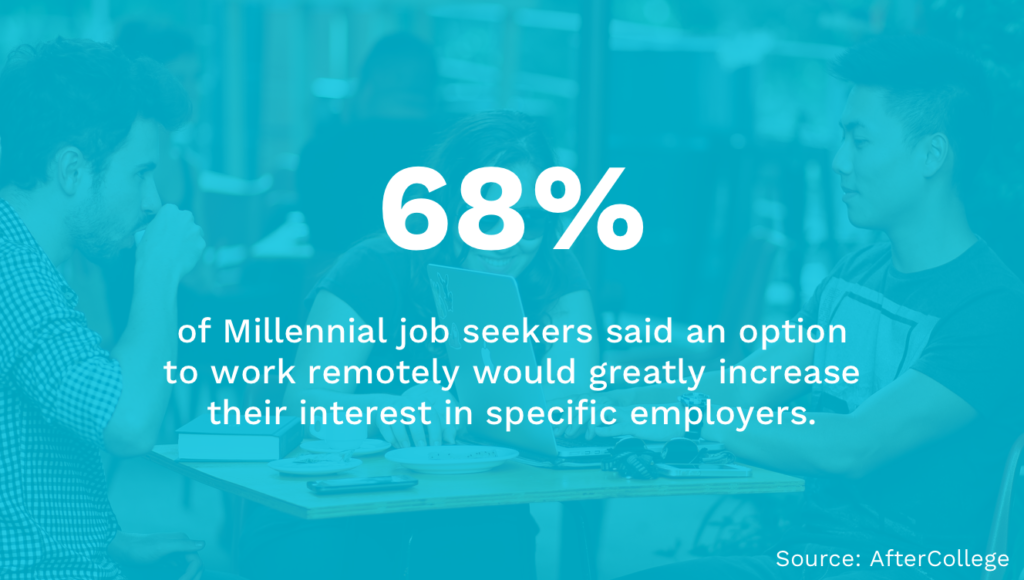
An option to work remotely can also help you attract new candidates.
But, there are some downsides to hiring remotely.
The cons of remote hiring
- More effort required: Keeping a team environment and having effective communication when your team is spread out all over the globe is harder than it is in a traditional working environment.
- Harder to provide training: It’s more complicated to train your customer service employees in a remote environment than in-house.
- Potential security issues: You have limited control of the wifi networks your remote workers use, so security can become a problem.
In general, the advantages of hiring remotely clearly outweigh the cons, since more and more companies engage in this type of recruitment, especially for the customer service roles.
So how to do it right?
7 steps for hiring remote customer service employees
1. Write an appealing job description
This is the first time a remote employee will hear about your customer service opening, so you need to make it compelling.
The nuts and bolts of a good job description include:
- The description of the role itself
- The requirements
- Your company culture
A common mistake recruiters make is not using the word “remote” in the job title, description, or in the location field when posting the job. For example, having a job title read “Customer Service – Remote OK” will make it clear for candidates who are trawling on job boards.
A good skeleton structure to follow is:
- Make the title bold: Give it the best possible chance for it to stand out from the text
- Break the description into digestible chunks: Make it easy for your candidate to skim
- Use bullet points: Highlight any job tasks or key requirements using bullet points
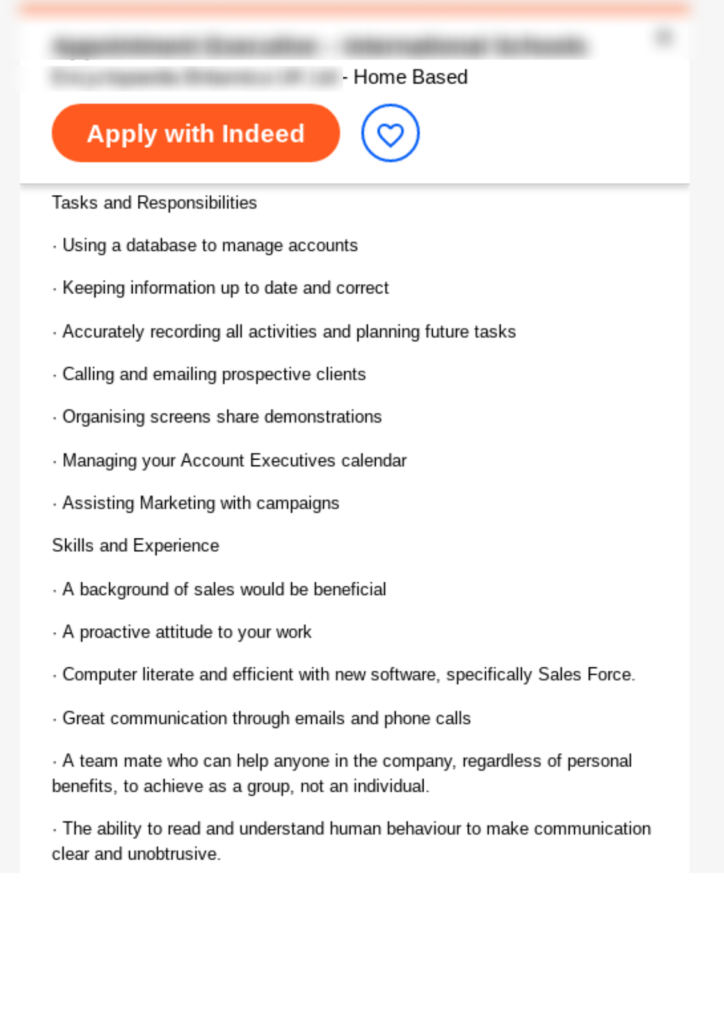
A sample of a remote job description on Indeed that utilized bullet points
However, writing an appealing job description goes beyond just listing job requirements. It’s a chance to sell your company as a great place to work that conveys your company culture and values.
That means you should also include the ways you will support the remote worker to achieve their goals. Emphasize that your company is about being open to flexibility, you value productivity over hours being punched, and you’re all about motivation and empowerment.
Also, think about what your ideal candidate for a customer service employee looks like. This will help you to specify the key working traits your candidates must have, and empower them to decide if they fit the role or not before applying.
An excellent example of a real-life company doing this is a SaaS company, Zapier. Their entire team is 100% remote, and their remote workforce is enabled with online collaboration tools. The company clearly lays out its culture and requirements to each and every candidate before they apply.
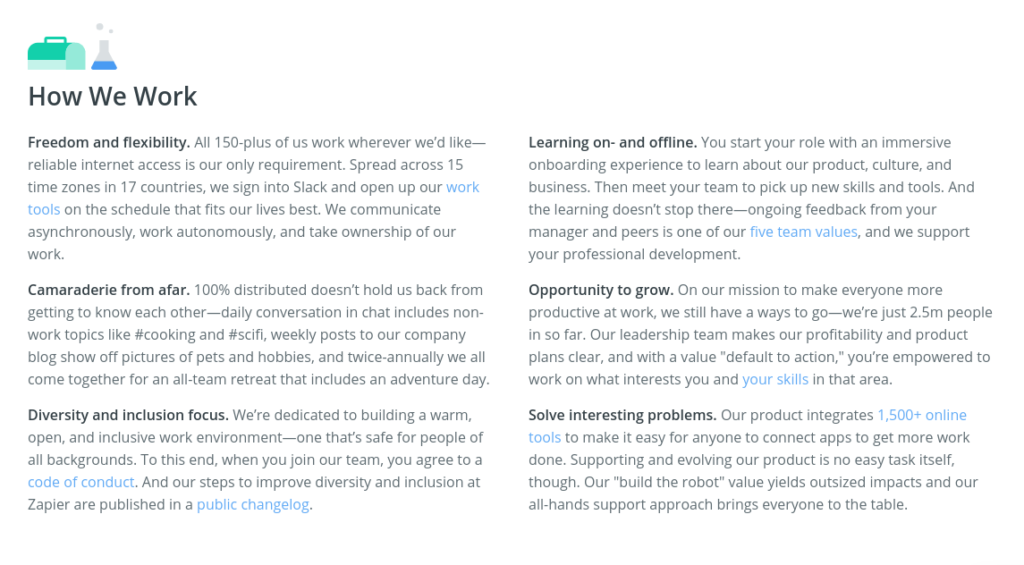
Zapier gives a clear rundown of their company culture on their job descriptions.
Co-Founder/CEO Wade Foster says the company uses collaboration tools so their team can work more efficiently, regardless of where they’re located.
“With well – connected tools & processes, any remote employee can feel more focused, productive & in control of their time,” he said.
Note: this is your time to be super clear about what the role is offering.
Even if you’re offering up a remote position, you need to be as transparent as possible about what the role will require from the start.
For example, is the customer service role flexible, or do you require someone to come on board part-time or full-time? Are you offering up medical and retirement plans?
Lay it all out in writing, so prospective candidates know what they’re signing up for.
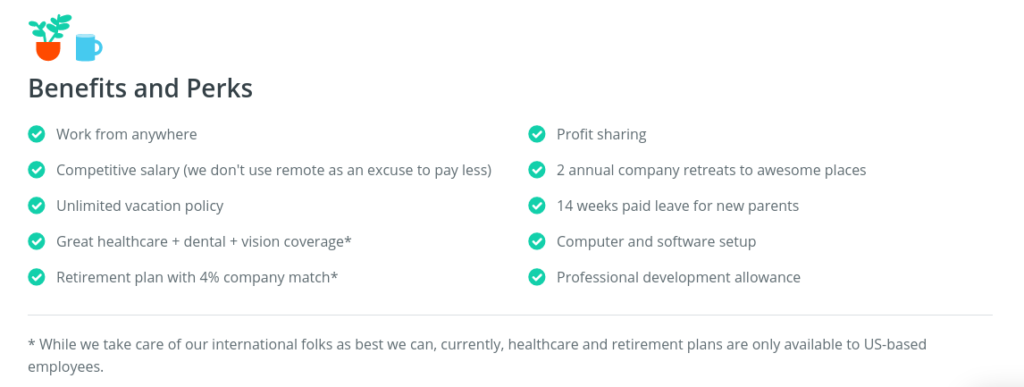
Zapier’s perks are written out clearly on all their job listings
2. Find the right candidates in the right spots
There is no point advertising for remote candidates in the newspaper.
You need to be finding your candidates in the right spots, and this means heading to remote job boards and listings.
For example, FlexJobs is a job board dedicated purely to finding remote and flexible job candidates. The site acts as a database for remote jobs and splits them up into categories:
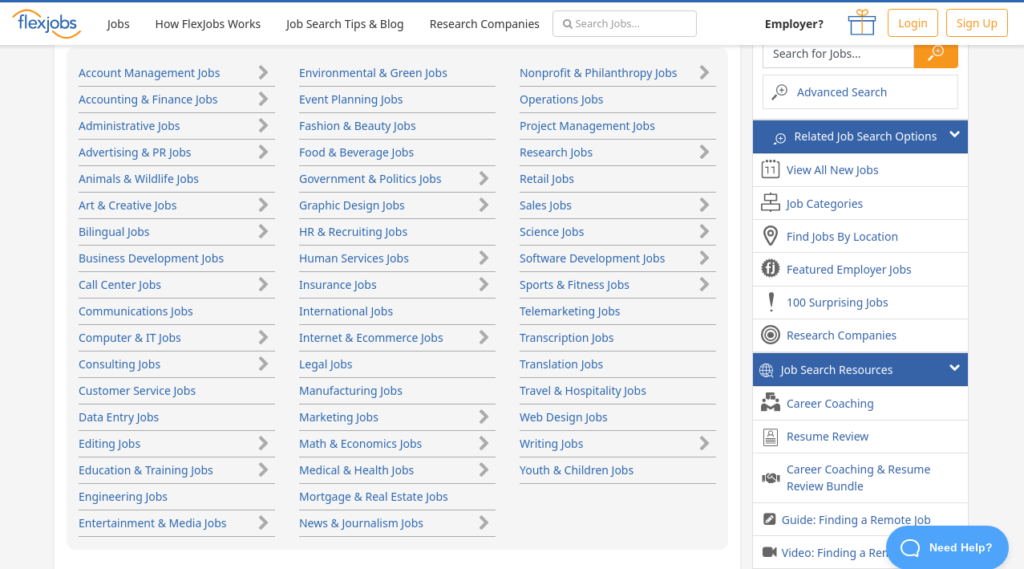
This makes it easier for candidates who are actively seeking out customer service roles to access the right openings, instead of being shown every job that’s labeled as remote.
Once a job seeker has clicked on the customer service job openings, they’ll be able to skim through openings and decide on pursuing an opportunity that looks good for them.
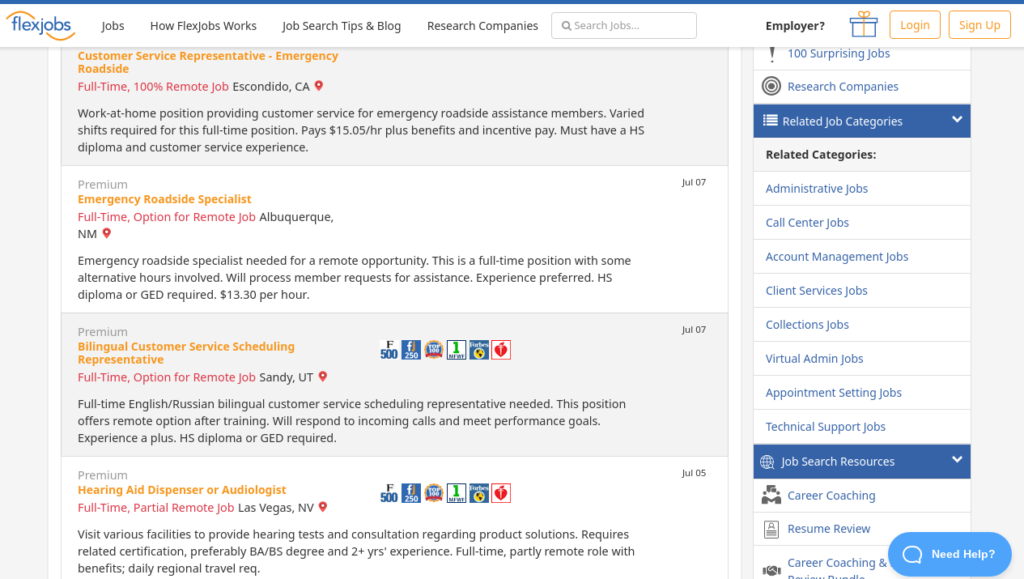
A quick look at the FlexJobs jobs board (shown above) gives you a good indication of why you need to make your role as enticing as possible, especially in the first paragraph of the description. If not, potentially great talent won’t even consider the opening.
Beyond FlexJobs, you can advertise on other remote job sites like SkipTheDrive, Working Nomads, and We Work Remotely. If you’re looking for customer service employees on a more ad-hoc basis, you can check out sites like Task Molly.
Pro-tip: AND.CO has a mega-list of where remote freelancers look for jobs that you can check out.
3. Look for the essential characteristics
It goes without saying that hiring for a customer service role relies on the candidate having the right characteristics.
First off, make sure they have the basics covered:
- Great communication skills
- Powerful collaboration skills
- Strong organizational skills
- Good time management skills
- Self-discipline
- Accountability
Next, move on to some of the skills a remote customer service worker needs to have to thrive in their position. This means looking at their:
- Emotional intelligence
- Humility
- Tech-savviness
- Patience
- Listening skills
- Capacity and willingness to learn
- Attentiveness
- Multitasking
- Time management
- Prioritizing
Unless a candidate has these, there’s a good chance they’ll be a bad fit for your customer service team. Unlike tech which can be taught relatively easily, if a candidate lacks listening skills or patience, it’s going to be an uphill battle to get their skillset where it needs to be. That’s why it’s crucial to weed out candidates at an early stage.
There are many ways to find out if a potential hire has your desired characteristics, and one of the best ones is using pre-employment tests. For example, using a pre-selection tool with an assessment library allows you to quickly test candidates on their capabilities before adding them to your hiring sequence.
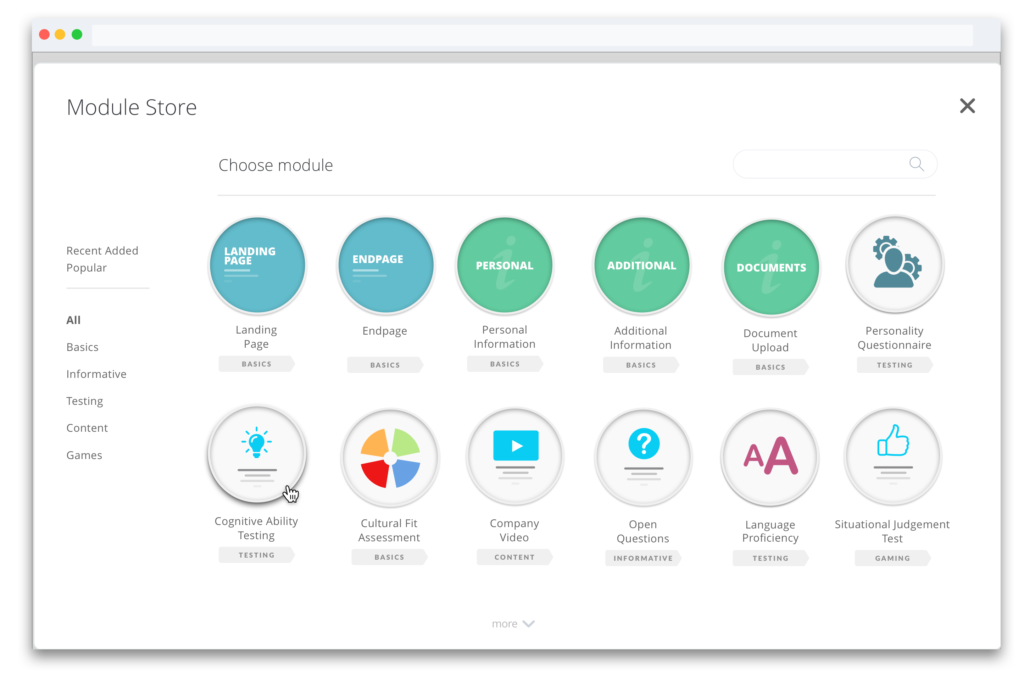
With an assessment library, you can build your own online assessment experience for your candidates and evaluate the skills that are predictive for success on the job.
4. Check the candidates’ tech
Remote employees need the right tools to do their job. At the very least, remote customer service employees will need:
- A computer
- A phone (with voicemail)
- A fast and reliable Internet connection
- Access to company email
- In many cases, VPN remote access to able to access corporate resources, and for security
There are two ways you can approach this part of the hire. You can either state that the employee has to provide all their own equipment, or you can offer to supply tech to employees.
If you aren’t willing to provide employees with a laptop, for example, then you need to specify that the candidate has everything themselves to be able to apply and then verify that it is really the case.
You can make a system check a part of your assessment – a test that will diagnose the hardware and software of your candidates and let you know if their equipment is sufficient to carry out the job.
5. Refine your interview process
Once you’ve got a pool of promising candidates in your hiring phase, it’s then time to refine your interview process.
The first step in doing this is abandoning what you traditionally look for in an in-house hire. For example, if you’ve hired a candidate before that’s super talented but needs a lot of direction, that might be okay in-house, but it won’t fly for remote employees. As remote workers need a lot of self-motivation to be productive, you also need to seek out candidates’ based on their organizational and time-management skills.
As your interview process will be done virtually using a tool like Zoom or Skype, it’s essential to pick up on things like their body language, as this might be your only chance to make these assumptions.
During the interview process, you can get a feel for their time-management or productivity levels by assigning them a task. Not only will this test their problem-solving skills, but you’ll also get a feel for how proactive they are, and how well they can work on their own.
There are a few core skills you should focus on in your interview process:
- Can they problem-solve?
- Can they assume a client-facing role? This is especially important for remote customer service workers. Their client communication skills need to be on point.
- Have they got experience working remotely already? This isn’t a prerequisite, but customer service workers that have worked remotely before are more likely to adapt to than someone coming straight from a regular office environment.
On top of that, you should dive a little deeper into their personality by asking some questions like:
- What is your communication style?
- Why do you want to work for (your company)?
- What about you makes you good at self-managing?
- Why do you want a remote working role?
This will give you a better understanding of the candidate and their motivations off-paper, and if they’re a good fit for your company’s culture and team.
6. Set the right job expectations
Throughout your recruitment process, it’s essential to set the right job expectations.
Our example of Zapier from Step 1 is an ideal example of this, along with a remote-first company, Doist.

Doist highlight their company’s approach to an inclusive work environment, along with other expectations of a candidates job role. It might not seem important to do this, but it is: About one-fifth of new hires who leave their jobs do so because they don’t like the company’s culture.
Make it clear what the job is about, what you expect from your new employees, what their career path is going to be like.
One of the best ways to do this is to offer up frequent feedback in the early stages of their employment. One survey found 65% of employees look for regular feedback (either on their progress or they want to give feedback on company culture). In turn, giving feedback can help to boost a remote employee’s engagement with your company.
Open and honest communication around job expectations and giving and taking feedback can make all the difference between new hires who quit and those who stay and work their way through the confusion or expectations gaps, if any.
7. Nail your onboarding experience
Almost 30% of new employees will leave their positions after the first three months.
But there is a way to stop all of your hard work hiring the right people going to waste: have a killer onboarding experience. Studies show that companies with a strong onboarding process boost new hire retention rates by 82%.
Remote onboarding is completely different from bringing in a new hire in-house. You won’t be able to conduct group trainings, and your new customer service hire won’t have any face-to-face interactions with you or their colleagues.
However, you can counteract this by building a completely digital onboarding process into your hiring strategy. This could include things like:
- A video Q&A on their first day
- Digital paperwork (for example, using a tool like DocuSign to get their contract sorted)
- Holding video calls with them throughout their first week or two to make sure they’re settling in
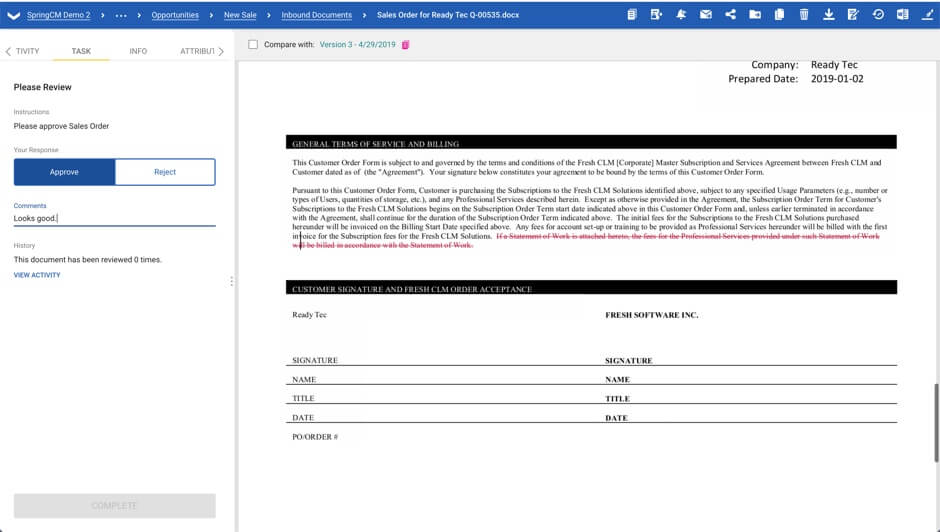
Tools like DocuSign can be a great addition to your digital onboarding process. By keeping blank contracts on file, it will be easier to send out new contracts each time you hire a new employee remotely.
It’s up to you to decide what your digital onboarding will look like, and it’s something that you can tweak with each new employee through feedback.
The reason that onboarding new remote hires is more difficult that office employees are the lack of perks you can offer. In a typical office setting, you’re able to entice new hires into loving their first couple of months on the job through your unlimited soda fridge or chill zone made up of hammocks and bean bags.
In the remote world, none of these perks exist. But there is a way to counteract this by highlighting the perks you are offering up. These might be small gifts like noise-canceling headsets for when an employee is in a public space (like a coworking office), or offering up a personal development allowance.
Make it clear where the new hire stands with:
- Vacation time
- Health and life insurance
- Memberships to coworking spaces or discount at local stores
Here’s a common misconception: hiring remote employees eliminates a lot of these costs. In reality, it doesn’t. You still need to provide remote employees with all the benefits of an in-house worker (health plans or annual leave). If that stings, remember all of the money your company is saving from office expenses.
You can also think about offering up a salary for a customer service role based on the remote hire’s cost of living. You can use a tool like Buffer’s salary formula to get a ballpark figure:

That way, a remote customer service hire in say, Brighton, is going to have the same financial satisfaction as an employee living in San Francisco. Having a base rate for all remote employees might seem like a good idea, but in reality, you need to offer up a decent enough package to keep your new hires happy.
Make each stage of the hiring process remote-friendly
Like any hiring process, the ultimate goal for businesses is to bring onboard the best talent that fit their company values.
When hiring remote customer service employees, this takes a little more effort than hiring on-site employees. Sure, you still need to look for the same characteristics whether they’re in-house or remote, but you need to switch up your interviewing process and look for additional characteristics when hiring for remote roles.
Take into account what remote hires are looking for in the role, and in your company as a whole. They’re looking for the right professional and cultural fit as much as you are, so take this into consideration when designing your remote customer service hiring process.
- White paper
Before you continue!
Don’t forget to grab your free copy of our new whitepaper on the digital transformation of contact center recruitment processes. Learn about:
- The biggest challenges in contact center recruitment today and how to overcome them.
- The 4 pillars of Digital Transformation
A top BPO’s journey towards a digitally transformed recruitment procest


